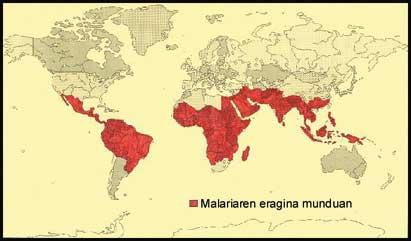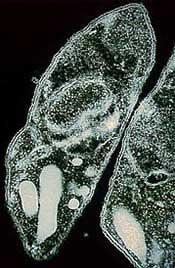Dr. Patarroyo's team is testing a new malaria vaccine
Malaria was considered a long-controlled tropical disease. However, the survival capacity developed by the disease-causing parasite causes more than two million people to die each year from malaria. Because it is a tropical disease, in poor countries it is where malaria influences the most, and in advanced countries few research is done to treat the problem.

Malaria is caused by the protozoo of the genus Plasmodium that contaminates a mosquito. These protozoa are inserted into the red blood cells where they grow and multiply until the cell explodes. The parasite then contaminates other cells and the process starts again.
There are many anti-malaria drugs. The ‘more traditional’ quinine is one of the ingredients of the traditional refreshing tonic we drink. This drug, despite its high effectiveness, has many side effects, so it began using other substances. But the protozoan Plasmodium has learned to fight these drugs, which makes the disease more difficult to control today than twenty years ago.

Colombian doctor Manuel Patarroyo and his colleagues are looking for new vaccines against malaria. In recent sessions, another protein similar to MSP-1 from the protozoo Plasmodium falciparum has been synthesized for use as a drug. But for biological activity to be adequate, the chain of this protein must take a certain position. If proteins do not bend well, they cannot begin their work.
The Patarroyo group has also overcome this obstacle; once the protein is folded, the two ends of the chain have joined together. In addition, this makes it difficult for the protozoo to destroy the protein. Therefore, this protein can be very suitable for preparing a new vaccine.
For now the vaccine has been tested in monkeys. Contaminated protozoa are marked with proteins and are willing to destroy the immune systems. Although it is only a first step, it has been successfully overcome. Now, before testing it in humans, among other things, you have to find the most effective way to administer the protein and then the future.
Buletina
Bidali zure helbide elektronikoa eta jaso asteroko buletina zure sarrera-ontzian











